Going for your morning jog all by yourself can not only get to be quite lonesome but even downright dangerous – tales abound of runners who got attacked or even killed while on the trail. Looking at getting in a full hour’s run while on your work out? If that is a yes, you need a dog breed that can actually keep up with your pace, not just any mangy mutt hustling for its next meal would do. Just because a dog breed is one of the “working dogs” does not mean that it is also a good breed for runners. So, to jump-start your foray into having your dog run with you, we have narrowed things down to eight of the best dog breeds for runners that are worth considering.
The Greyhound
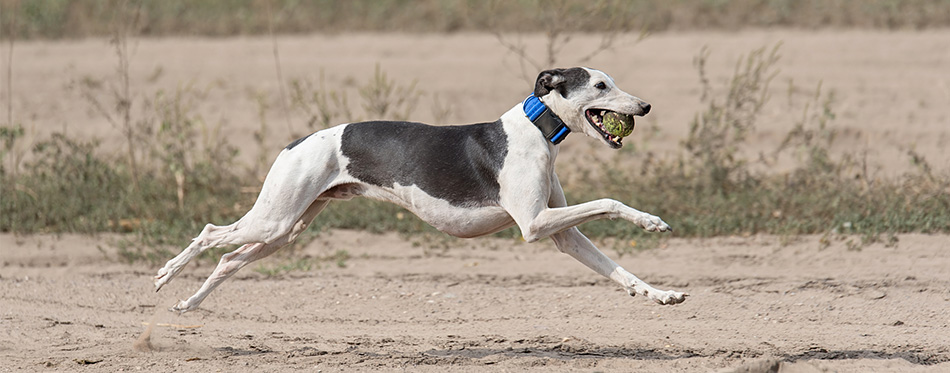
Built for speed with an American bus company named after it, an accurate list of best dog breeds for runners would not be truly complete without the Greyhound in it. Little wonder, the greyhound was the dog of choice by professional dog racers. Slender and lean, its graceful yet swift movement and excellent sight make it a worthy companion for many avid runners.
The greyhound, despite its racing prowess, is a very gentle dog making it perfect as a family dog as well. Talk about a multipurpose dog. Despite its seemingly fragile and slender looking torso, this slim built dog is very powerful with its flexible spine packing quite a running punch. On average, a greyhound can exceed speeds of up to 40 miles per hour. At full speed, the greyhound can attain 43 miles per hour within 98 feet. That is more than enough speed to keep up with any human runner. The best part is for the athletic greyhound, it isn’t particularly exerting itself. Running is built into its DNA.
For more options head over to our guide on Dog Food for Greyhounds.
The Dalmatian
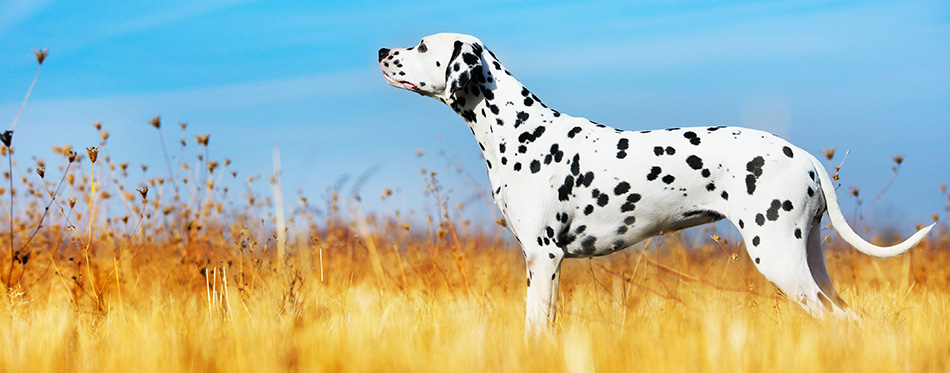
The Dalmatian? You might wonder how this spotted dog breed made the list. First off, get your head out of the poor, yet super cute 101 Dalmatians abused by the evil Cruella De Vil of Disney’s 101 Dalmatians fame. Dalmatians in real life are not the shrinking sort. They are a very strong breed of a running dog. So strong, in fact, they are known to be able to keep up with horses. And we know horses are known for speed. So, running with a puny human will be a piece of cake.
Though large, its size does not get in the way of its speed. Its lean frame certainly helps. In fact, way back in the day, firefighters used Dalmatians to run ahead of firefighting carriages to clear a path for rescue. Even better they come built with a protective streak. Seeing how many runners make the headlines caught up in dangerous situations with stalkers and potential murderers while out running, having some four-legged, canine protection with sharp teeth, speed and a protective streak is in your best interest.
The Whippet
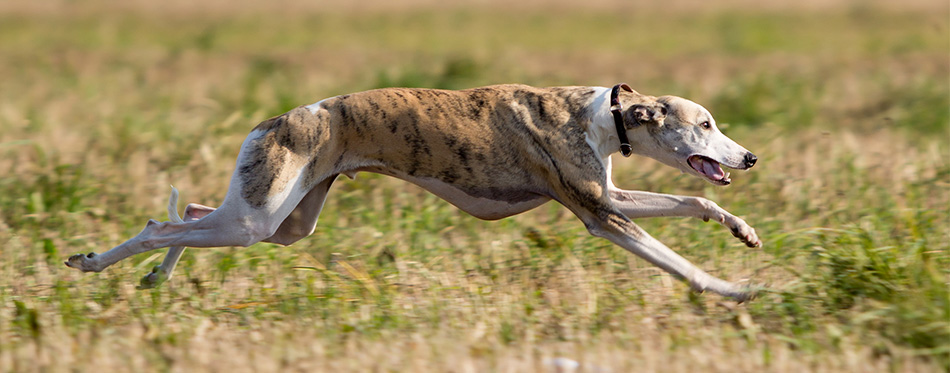
Also of the greyhound family, looking at a whippet it is not that hard to notice a resemblance. Although smaller in size than its larger cousin, the Greyhound speed still runs in the family. The Whippet has managed to carve quite the niche for itself in running so much in fact that it has featured in professional dog racing. With recorded speeds of up to 34 miles per hour, it sure is not hard to see why. The Whippet holds the title of being the ‘fastest accelerating dog in the world’.
The medium-sized Whippet, usually between the 15 – 42-pound weight range, is the fastest dog in its weight group. Mild tempered and often described by owners as being ‘dignified’ in conduct, the whippet is not a dog that is prone to frequent health issues. It, however, is an active dog that needs a lot of exercises. As the swift runner you are, that should not be a problem. If you are the kind to have a dog for company after working the entire day, the Whippet might not be the best dog for you.
The German Shepherd
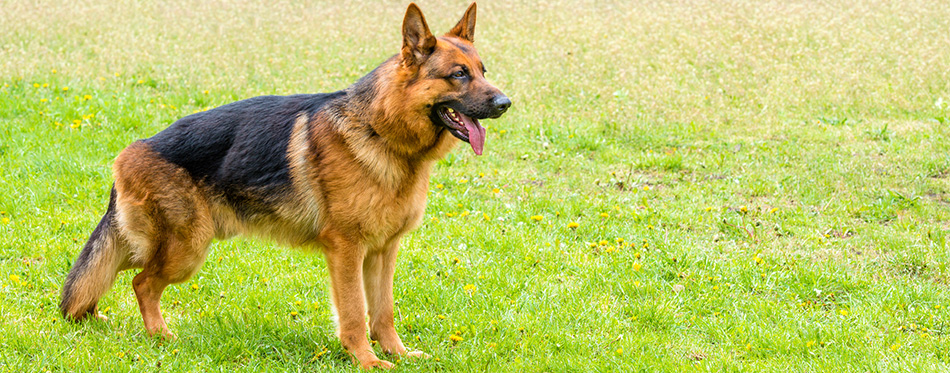
Surprised to see the German Shepherd making the list? Don’t be. Much as they are the poster dog for the infamous ‘Beware of Dog’ posters on homes, the German Shepherd is much more than a guard dog. Large framed though they are, they are a good breed of a running dog. The German Shepherd is a dog of many parts. If you have a family with children yet you enjoy some canine companionship while out for a run, the German Shepherd is the dog for you. They are friendly with children and very protective to boot.
German Shepherds are large dogs and as such, heat up fairly quickly. Going for a leaner one would do well for your running purposes. A very sociable yet intelligent dog and protective dog, the German Shepherd is probably not the best for runners preparing for marathons especially as things will inevitably heat up. For the short distance, keeping healthy style of once or twice a week run, this dog is the one for the job.
Check out our guide on Dog Food for German Shepherds for more info.
The Border Collie
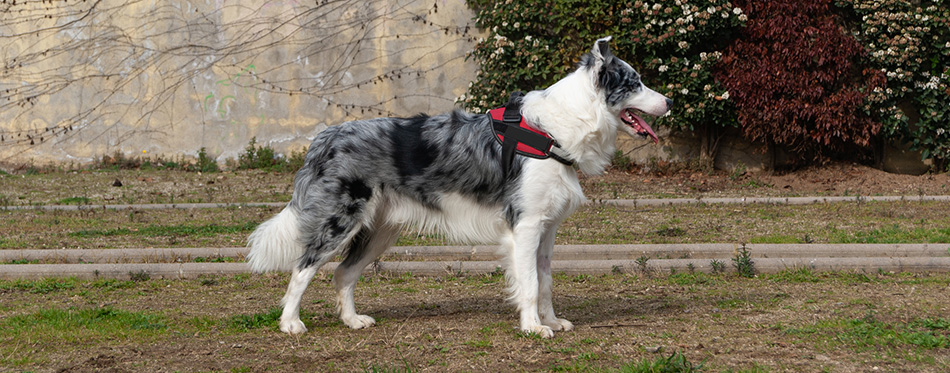
If you are the sort of runner to keep going at it like the energizer bunny never tiring out, then the Border Collie is the dog breed to go for. Popularly used on ranches chock full of livestock, the Border Collie has put in enough time rounding up sheep and cattle to have built enough stamina for prolonged running. At recorded speeds of up to 30 miles per hour, the Border Collie is 9th on the fastest dog in the world list. With stats that impressive, marathon runners need a canine-like this on their side.
Temperament wise, the Border Collie is a smart dog and very energetic too. The pooch sure needs all the intelligence possible to round up those silly sheep with a tendency to wander off and into a predator’s hungry mouth. All that energy will come in handy for you while running. With a Border Collie on your side, while prepping for a marathon, you will never have to worry about your pooch running out of steam. With its boundless energy, it is likely you will be the one struggling to keep up.
The Vizsla
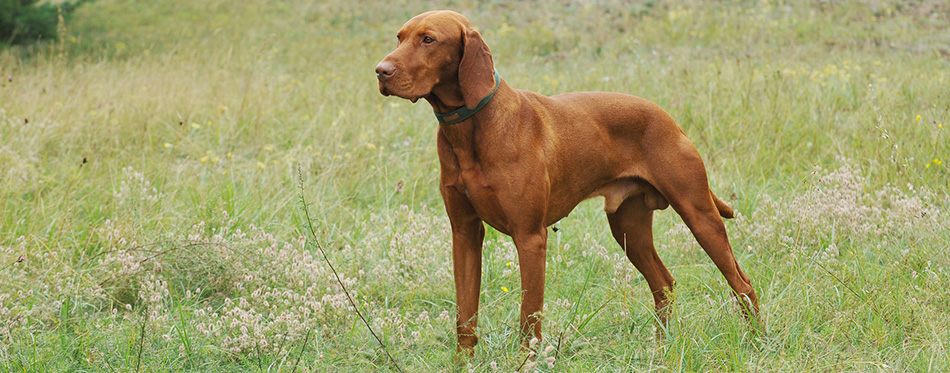
Though not as popular among runners as much as Greyhounds, the sociable Vizsla makes for a great running dog. If you will be engaging in a more professional style endurance running, the Vizla is certainly worthy of consideration. The athletic Visla is known for its stamina, which you will be needing plenty of while out running. The Visla has the added perk of being a hunting dog. With a Visla on your side, both running and hunting season are covered. Some canine support with its keen nose and tracking skills will bring a larger game to the dinner table during hunting season.
Vizlas are friendly dogs that are as good for a running or hunting session as well as for snuggling up with. They are openly affectionate and enjoy being stimulated mentally. You can readily teach a Vizla to play catch, hide and seek or any other fun game with it actually understanding it. Its playful nature makes it fun company for the family while at the park, a picnic, fishing or any other outdoor activity.
The Labrador Retriever
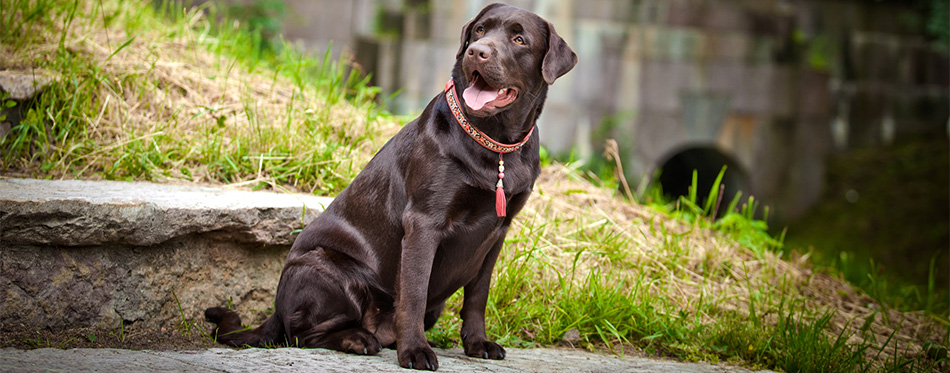
If you have got young children with you yourself being an active person, the Labrador Retriever is one of the best dog breeds you can invest in. With an upbeat personality, this playful pooch’s energy levels are off the charts. Enthusiastic about going out especially when you, its darling owner is in the mix, the Labrador Retriever is no couch potato to being coaxed into activity. It was born to engage physically. They respond well to training so teaching it commands to keep close with you not running off after every butterfly or person it meets out on the trail is a none issue.
The lean frame of the Labrador Retriever makes it an excellent choice for both a sprint or a long-distance run. As very hardy as the Labrador Retriever is, you will hardly find a best dog breed list without it being featured. They are incredibly loyal to their owners and obedient too. A fine quality that has saved some Labs from falling and getting trapped in some pit while out running simply because they obeyed their owner’s warnings.
You may also like our article on Dog Food for Labs.
The Siberian Husky
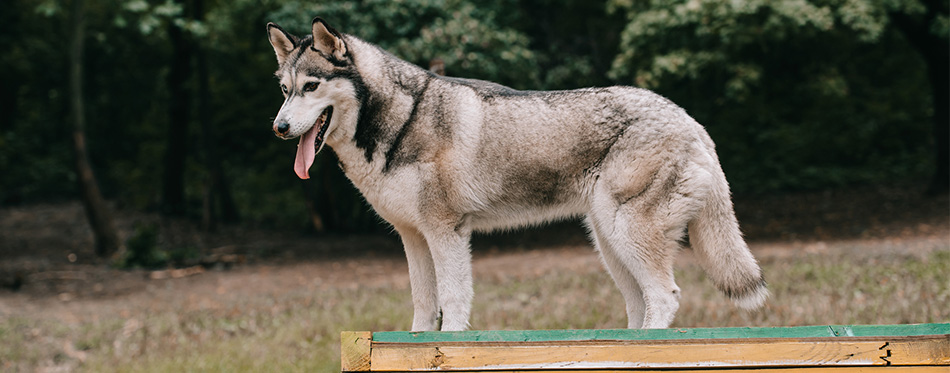
All the talk about dogs getting heated up while out running might have you worried. So worried you are surprised a breed such as the Siberian Husky made the running list what with all that thick fur it has got going on. The Siberian Husky is one running dog not to be underestimated. It was born for the trail. Running is in its blood. About the heat matter though, this dog is best suited for runs in subzero temperatures such as the North Pole, Alaska, or Finland. Basically any freezing, Scandinavian setting would be pure bliss for a husky.
Bred to pull loaded sleds while maintaining speed, keeping pace with you is, literally a walk in the park for a Siberian Husky. You do not have to worry about your pooch freezing to death. With its thick fur and soft undercoat, the Siberian Husky is in its element in icy temperatures. Its very nature keeps it very well protected in harsh weather. Your job is to keep running and watch your doggy keep pace with you, with ease too.
Find out more about Dog Food for Huskies here.
Conclusion
Although some dog breeds are practically built for speed, truth is to achieve the best results you do not just grab the pooch and start hitting the trail hard. That is the fastest way to end up burned out with your dog just rearing to go. Work at getting your dog in sync with you especially if you do long runs. That way both you and your pooch could continue at an easy lope or switch things up without losing the other along the line. Take baby steps by doing between 2 – 3 miles per run gradually increasing it by 0.5 miles and watch how your dog adjusts to the change.
How your dog handles the added miles is very important especially in view of heat. When you heat up, it is not that hard to tell with sweat dripping all over the place. Dogs handle heat differently from humans though. So while your dog might be at par with you running, be very watchful on how it is handling the heat. Heatstroke can kill a dog. Watch out for if your pooch is panting. Panting is the doggy equivalent of sweating. A panting dog is a cooling dog. To err on the side of caution, keep your runs to when the weather is cool with temperatures being below 80 degrees.
Also, keep in mind also that dogs do not have the luxury of wearing running shoes as you do. Their soft paws could be put under a lot of pressure if you choose the wrong trail. While your running shoes with their EVA midsoles protect from impact, your dog’s paws enjoy no such protection. Asphalt can be hard on a dog’s paws especially when it heats up. Stick to grassy trails and your pooch will certainly be thankful. For more options, check out our detailed review of paw protection waxes.
If it turns out your dog handles the switch like a pro, heat, and trail challenges notwithstanding, you can add on yet another 0.5 miles and continue adding and observing it till you reach your desired number of miles per run.
Whatever the number of miles per day/per runs that you have set for yourself and your dog, make sure to give it a rest sometimes. Back to back daily runs are a surefire way to wear out both human and canine out extremely quickly. Runner dog experts recommend setting aside at least two days of rest for the two of you. That being said, you can now start considering the best dog breeds above.
Sources:
- Run, Spot, Run! – AVMA

